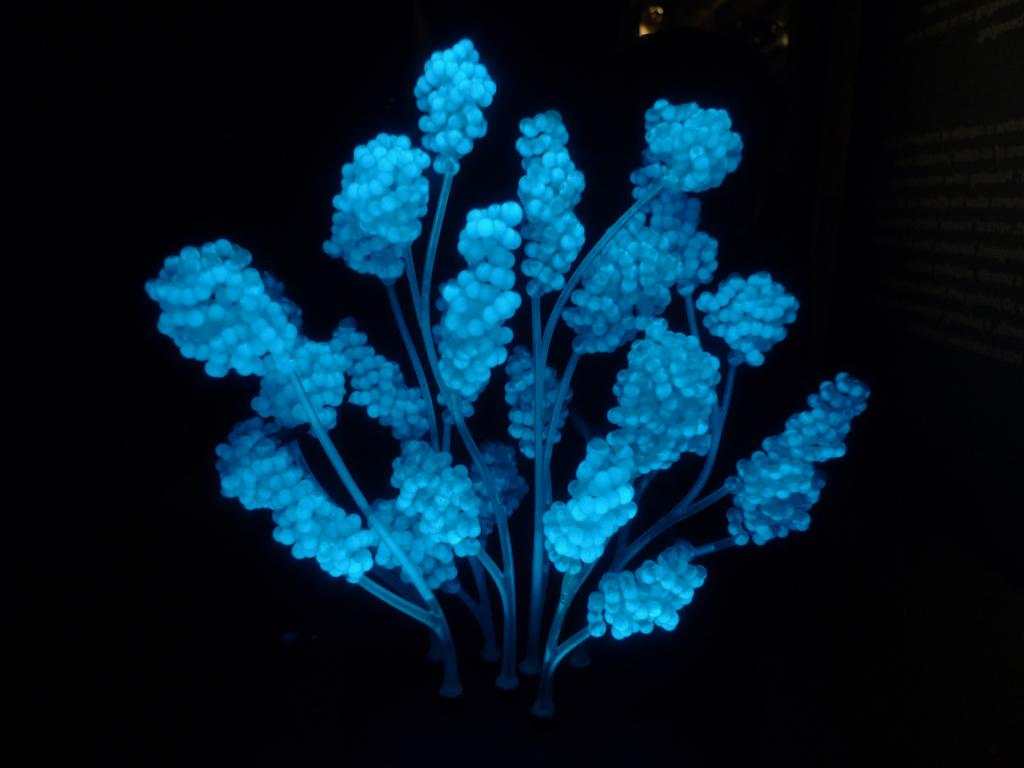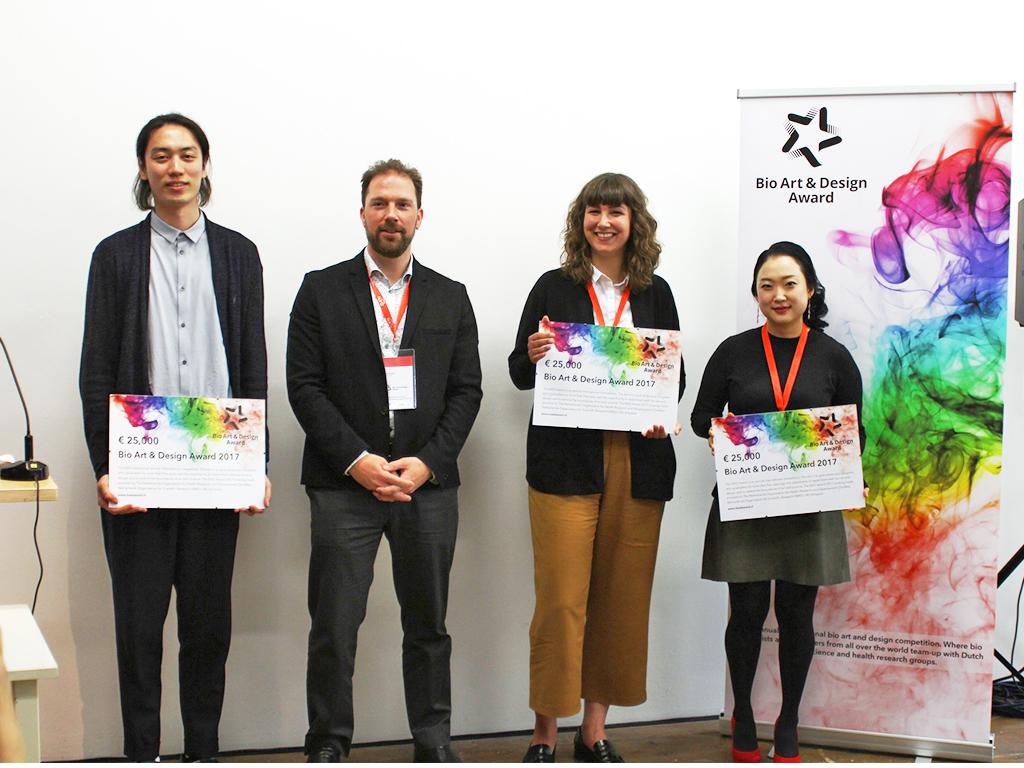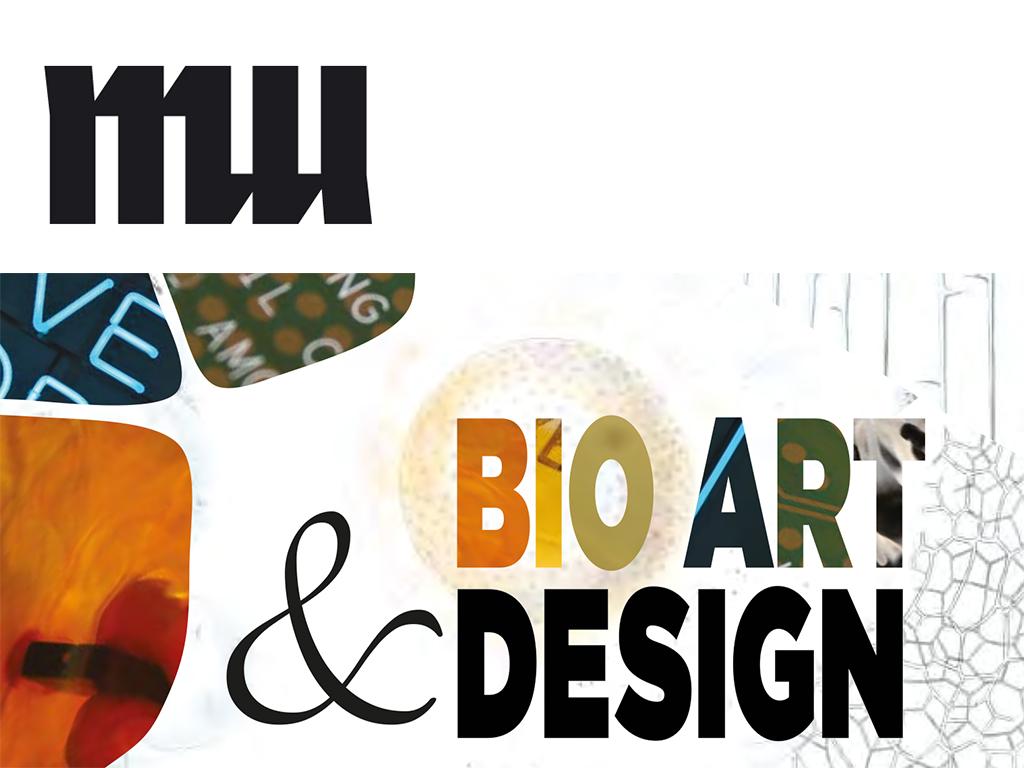At MU gallery in Eindhoven, the 7th edition of the Bio Art & Design Award shows works of the winning teams and several other works of bio art and bio design under the title Fluid Matter.
Lilian van Daal & Roos Meerman made several objects called ‘Dynamorphosis – The beauty of inner mechanisms' (see top image) in collaboration with Renée van Amerongen of the Swammerdam Institute for Life Sciences. Van Amerongen complimented the artists for she had never had such students that worked so hard for so little money and even came up with the best scientific questions that Van Amerongen often could only answer with "we don’t know that yet."
The most interesting however of Van Daal and Meerman’s work is that by their way of questioning, they created a sculpture that shows the way the human breast gland works. Such a model has until now not been made and the way they made it surprised the scientists they worked with. By experimenting with 3-D printed inflatable objects they were able to make a model mimicking the ‘construction’ of the inner tubing and vessels of the breast gland. Flows in the breast are visualised in such a way that go beyond art as an illustration of science, showing how artists are able to master form and aesthetics that can lead to new insights.

Works of Cecilia Jonsson (left) and Pei-Ying Lin (right)
Cecilia Jonsson made a compass needle out of iron harvested from over 40 human placentas. She collaborated with Rodrigo Leite de Oliveira of The Netherlands Cancer Institute / Antoni van Leeuwenhoek Hospital. The works is titled Haem. The work seems quite confrontational, containing human remains loaded with symbols. Jonsson however worked with it in such a way showing how much bodies are part of interfering cycles of matter, fluids, life and meaning, presenting the compass needle as a tiny, sharp and magnetic sculpture with great serenity floating in a crystal bowl filled with water. Not a typical bio art piece as such, but the result of accumulated artistic research of years wherein she has been researching many different ‘iron-loving’ species and how they are transformed by and transform mineral cycles as sculpting forces.
Pei-Yin Lin a few months ago lead (together with Spela Petric, Susane Camara-Leret and Mike Thompson) the final workshop of our Art of Impact-supported project DIY Antibiotics - Biostrike. The workshop, besides being a biotic fingerfood dinner feast with much cross innoculation between us and the microorganisms on our plates, was very ambiguous about the idea of DIY antibiotics, as we are so much more than just a single organism, carrying so many different other species with us, that we live in symbiosis with.
For the Bio Art & Design Award Pei-Yin Lin collaborated with with Miranda de Graaf of the Erasmus MC Viroscience Lab on work with many layers ‘Tame is to Tame’. Tame is to Tame contains elements of speculative design, serious gaming, sculpture, video, performance art and most interestingly ‘The Virus Tamers Manifesto’, a plea to chose whether to hunt viruses or not, whether to live with them or not, to play with them or not, to make relations with them or not, creating a much richer understanding about our interactions with viruses than we usually get from the medicalized contexts we are most often informed by.


